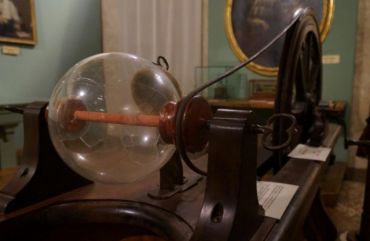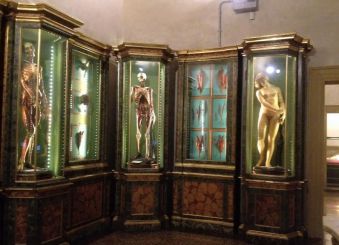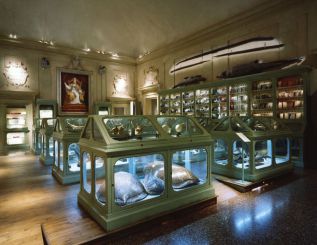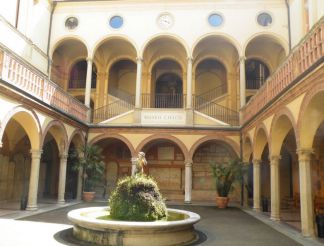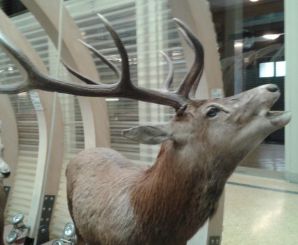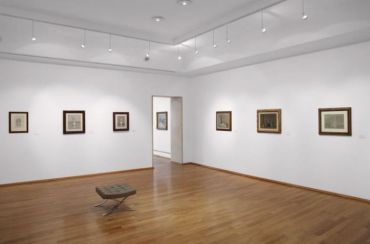Palazzo Poggi Museum, Bologna
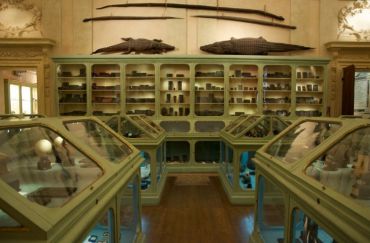
The Palazzo Poggi Museum is part of the university museum system Alma Mater Studiorum of the famous University of Bologna. It is the result of the reorganization of several laboratories of the old 18th-century Institute of Sciences into exhibition spaces – that’s why its collections are very diverse and rich. In addition, the Palazzo Poggi houses the rector's office and the library that is owned by the University of Bologna.
History of the palace and museum
The Poggi Palace was built between 1549 and 1560 by the order of the brothers Alessandro and Giovanni Poggi. The well-known architect and artist named Pellegrino Tibaldi was put in charge of the project. In 1711, the Senate of Bologna bought the palace from the Poggi family, in order to turn it into the Institute of Sciences. In 1714, the idea initiated by Luigi Marcili, an Italian military man and scientist, was implemented. In 1725 a tower was built for the observatory, in 1744 a library was created, then a monumental central hall was finally completed in 1756.
The Institute of Sciences quickly became an important part of the University of Bologna. During the Napoleonic occupation, in the late 18th century, its departments and historical pieces were scattered around different museums. Throughout the years of activity, a lot was added to the original collections. In the late 20th century, the University of Bologna organized a cultural project which aimed to bring back all the collections the palazzo once owned by the various institutions. The museum was opened to the public in the fall of 2000.
Museum’s exhibitions
The palace boasts restored original luxurious interiors. Various beautiful friezes, bas-reliefs, ornaments, and frescoes made by eminent the Renaissance artists, such as Prospero Fontana, Pellegrino Tibaldi, Niccolo del Abbate and Nozadella, can be found inside its eight huge halls. Besides the fascinating interior, there are many valuable collections.
- Carducci’s lecture hall. This is where the famous Italian poet Giosuè Carducci taught literature lessons. In the hall, you will find the original furniture of that time and the bust of the Nobel Prize laureate.
- Museum of the 9th century. The exhibition was created in 1888 in the Archiginnasio to celebrate 800 years since the foundation of the university. In 1948, it was moved to the Palazzo Poggi. Among the exhibits, there are many items that date back to the 11th century: parchments, codes, incunabula, seals, diplomas, statutes, donations, autographs, medals, rector signs. The most remarkable ancient piece here is toga that belonged to Luigi Galvani. In addition, more than 20 oil portraits of outstanding university professors are put on display as well. There is also an art gallery owned by the Institute which was founded in 1756, and today it possesses over 400 artworks.
- Museum of Ulisse Aldrovandi. Its collections include a rich donation made by the famous naturalist to the city senate in 1603 that was later transferred to the Institute in the 18th century. Among the exhibits, there are minerals, fossils, stuffed animals and a rich herbarium. Different pictures and scientist’s personal correspondence can be found here as well.
- The Marsili Museum. It was established in 1930 on the occasion of the 200th death anniversary the Insitute’s founder. Some scientist’s collections are put on display in the Civic Archaeological Museum. The same exhibition is divided into 2 rooms and mainly consists of manuscripts and printed works that document the research of Marcilla in various fields. Wooden models of fortifications, bronze models of guns and mortars from the military department are also located here.
- Museum of Ships and Ancient Maps. The exhibition has 10 very rare models of various commercial and military vessels made in the 16-18 centuries. Here you can also see old 17th-century navigation maps made in Bologna, Paris, Marseilles, Amsterdam, and London.
- Anatomical collections. They are displayed in a cabinet arranged in 1757 where a well-known surgeon and obstetrician Giovanni Antonio Galli worked. This is a reconstruction of an experimental laboratory which includes anatomical tables, clay, wooden and wax models of internal organs as well as surgical tools of the 18th century.
- Museum of India. In this part, you will find pieces collected in 1902 by Francesco Pullè in India. Among the exhibits, there are porcelain and bronze artworks, weapons, fabrics, vases, Indian metal plates, as well as several manuscripts.
- Oriental art collection. It boasts a number of pieces of fine and decorative art of the 8th-16th centuries from Japan and China.
In the separate hall called "Sala della Magna Charta" an original document of the Magna Charta of the European Universities can be found. It was written in 1988 and ratified by representatives of educational institutions from 80 countries.
How to get
The museum is located in the historical center of Bologna, on Via Zamboni, 33. The same building houses the Museum of Astronomical Observatory in its tower. Other museums of the university system are situated nearby – zoological, anthropological, geological and mineralogical ones. The closest bus stop is Porta San Donato (you can catch buses № 14, 20, 25, 28, 36, 89, 93, 99, 106, 211, 243, 301, 916 there).
Opening hours: from Tuesday to Friday from 10:00 to 16:00; on Saturday, Sunday and public holidays – from 10:00 to 18:00. The place is closed on Monday. A contact number for inquiries and booking: (+39) 051 2099610.
Admission: a full ticket costs 5 euros, reduced one (for visitors aged 19–26 and over 65 years old) – 3 euros. Persons under 18 are free of charge. The information about admission and opening hours may be changed.



